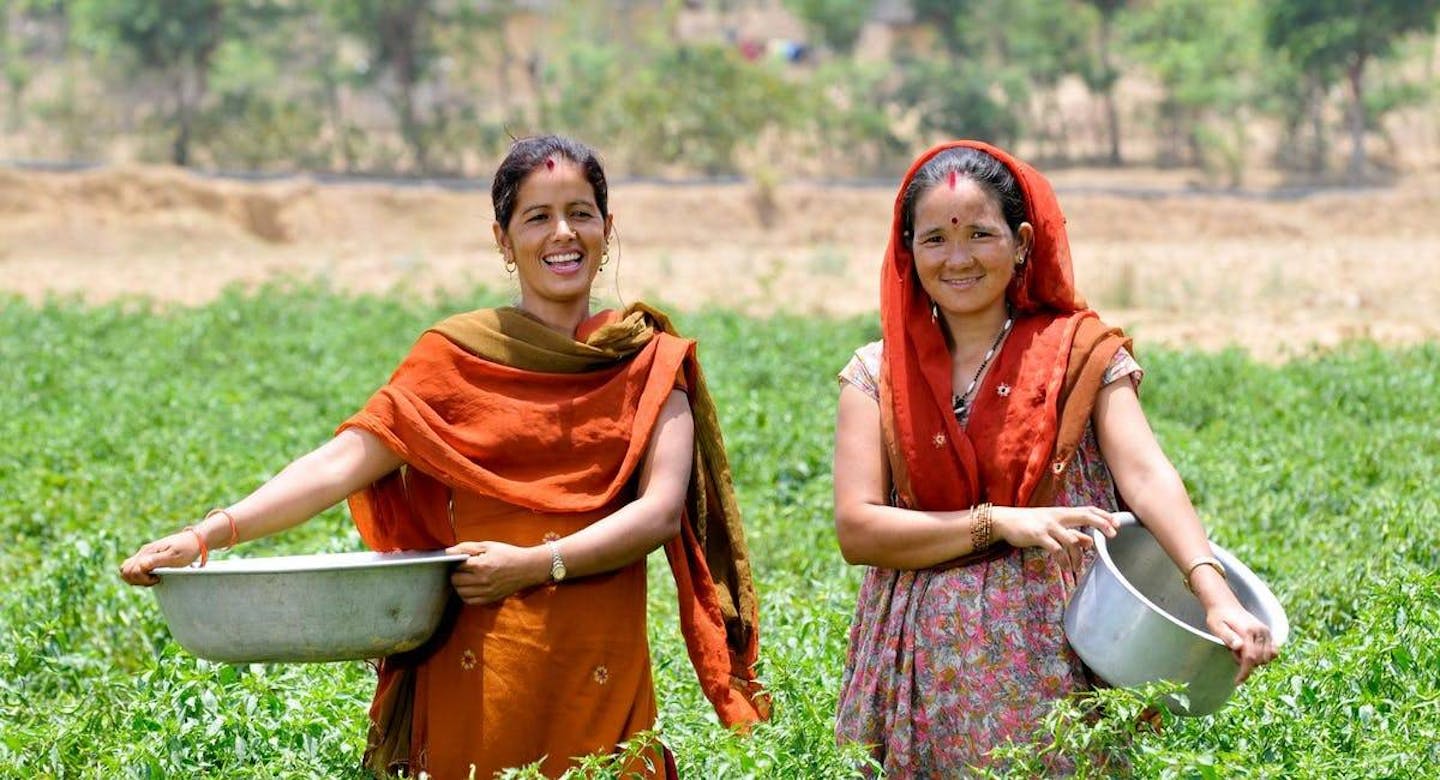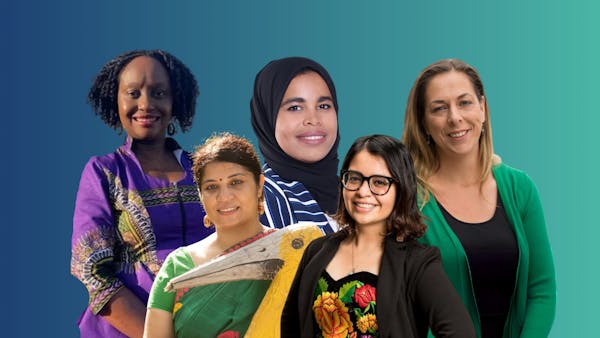Why women are key to solving the climate crisis
There’s no denying women are leading the fight to save our planet. In every society worldwide, women and girls are responding more effectively in times of crisis and actively working towards creating a more just and sustainable future for all.
Yet, gender inequalities persist worldwide.
By rightfully acknowledging what women bring to the table, we can start to close these gaps and accelerate the collective action needed to solve climate change.
Below are nine reasons why it’s critical to empower women and give more resources to women climate leaders, backed by research.
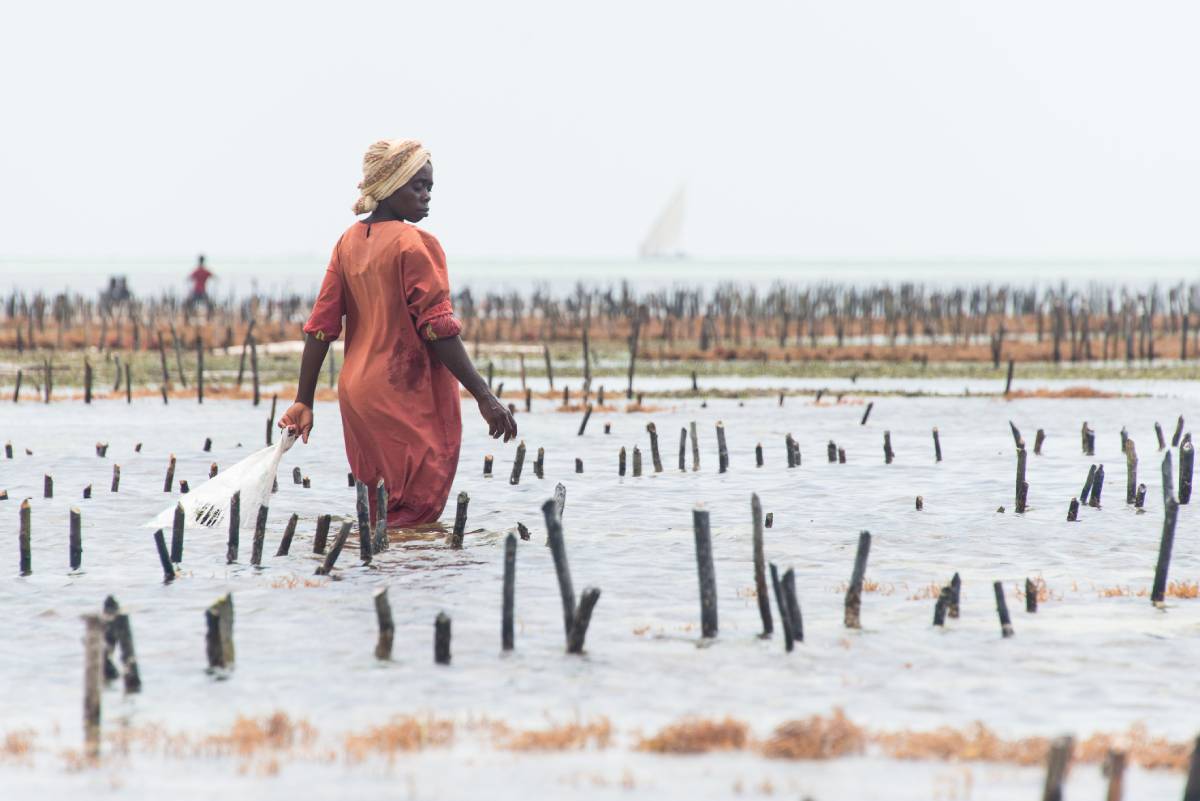
Local woman harvesting cultivated seaweed, Zanzibar. Image credit: ID109544279 © Ventura69 | Dreamstime.com
1. Women are the most impacted by the effects of climate change
Bearing the brunt of natural disasters and violence
Beginning on a somber note, the effects of a warming planet are not equally felt. The UN estimates of those displaced by climate change, 80% are women. [1] Ever more prevalent natural disasters such as droughts, floods, cyclones, hurricanes, and wildfires are the causes of these displacements.
Women are still in harm's way even after these severe weather events occur when assistance is needed most. Evidence shows that violence against women and girls increases in disaster settings [2], and a twenty-one-year study with a sample of 141 countries found that more women die from disaster events than men. [3]
More exposure to pollutants
Pollution also disproportionately affects women and children. Mercury emitted from coal-fired power plants is a startling example.
Forty-eight tons of the toxic chemical is pumped annually into the air in the US alone [4], resulting in one in six women now having unsafe levels of the element in their blood.
Pregnant women, infants, and young children are most vulnerable to mercury poisoning, which harms a developing child's ability to walk, talk, read, write, and comprehend. Approximately 630,000 babies are born yearly at serious risk of neurological impairment due to prenatal mercury exposure [5].
Economic status and gender roles also put women at risk
Even more grim is that the world's most economically marginalized countries are more vulnerable to natural disasters and pollution, and women make up the majority of the 1.5 billion people living on less than $1 per day. [5] Worldwide, women aged 25-34 are 25% more likely than men to live in extreme poverty. [6]
Traditional gender roles also expose women more to the adverse effects of climate change. In many parts of the world, women are responsible for gathering water, food, and fuel and primarily engage in subsistence farming, caregiving, and cleaning.
These activities are heavily dependent on natural resources and are thus more susceptible to the effects of environmental degradation and rising global temperatures. This can lead to a vicious cycle of increasing poverty.
However, despite these hardships, women worldwide have demonstrated that when they take charge after environmental disasters, livelihoods improve, and effective climate solutions are created.
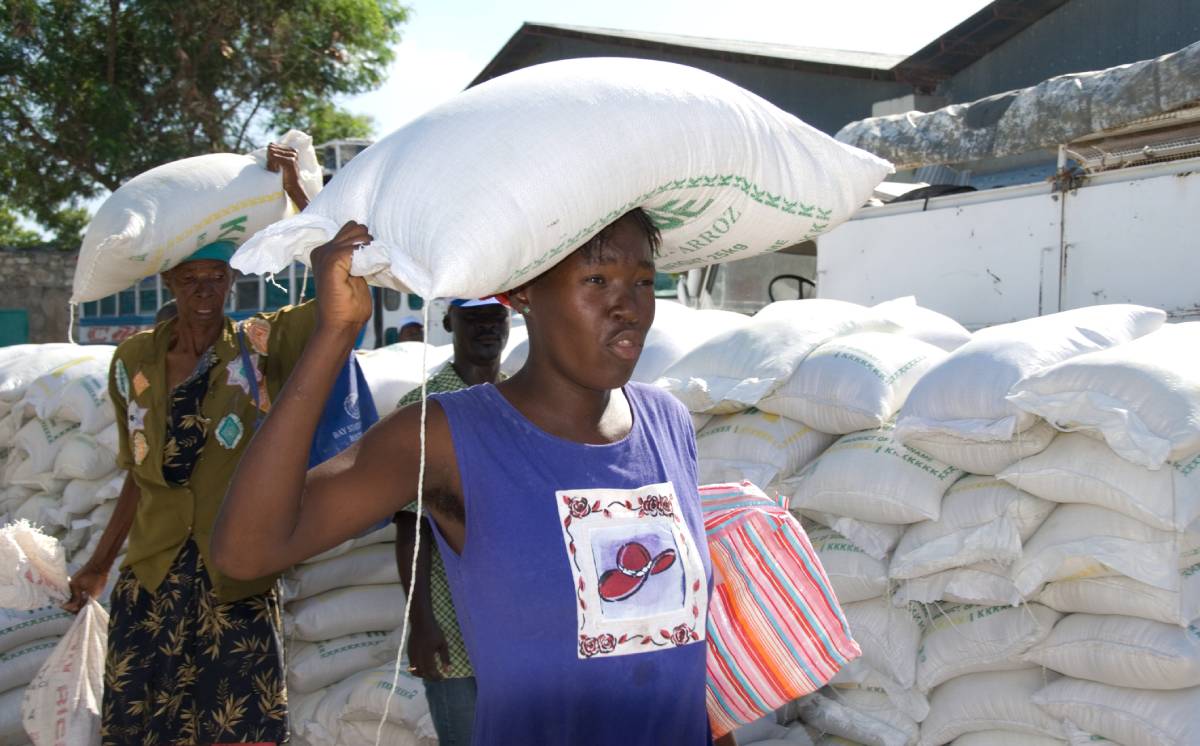
Women who received bags of lentils from a distribution site in Gonaives, Haiti, carry their food and cooking oil off to their homes weeks after Hurricane Ike. Photo: ID 7543780 © David Snyder|Dreamstime.com
2. Women are proven better leaders in times of crisis
The Covid-19 pandemic shed light on the strength of women
When empowered during disaster and emergency response planning, women showcase unique knowledge and skillsets that allow communities to recover quicker and more effectively.
A study of 194 countries found that pandemic responses were systematically better in women-led countries. [7] Data also shows that Covid-19 deaths were lower in states with a woman governor. [8]
During the first quarter of the pandemic, an assessment of managers in corporate America also found that women leaders were better at motivating employees, taking the initiative, developing others, and communicating powerfully. [9]
Better at thinking ahead and for the collective whole
Research has also shown that women adopt innovative and preventative measures faster than men. In a review of 17 studies from around the world, the presence of women in conservation and natural resource management resulted in stricter and more sustainable extraction rules, greater compliance, more transparency and accountability, and better conflict resolution. [10]
This research has also shown that women tend to think for the collective whole rather than themselves—making more decisions that support the public good, provide fair pay and benefits, and encourage honest and ethical behavior.
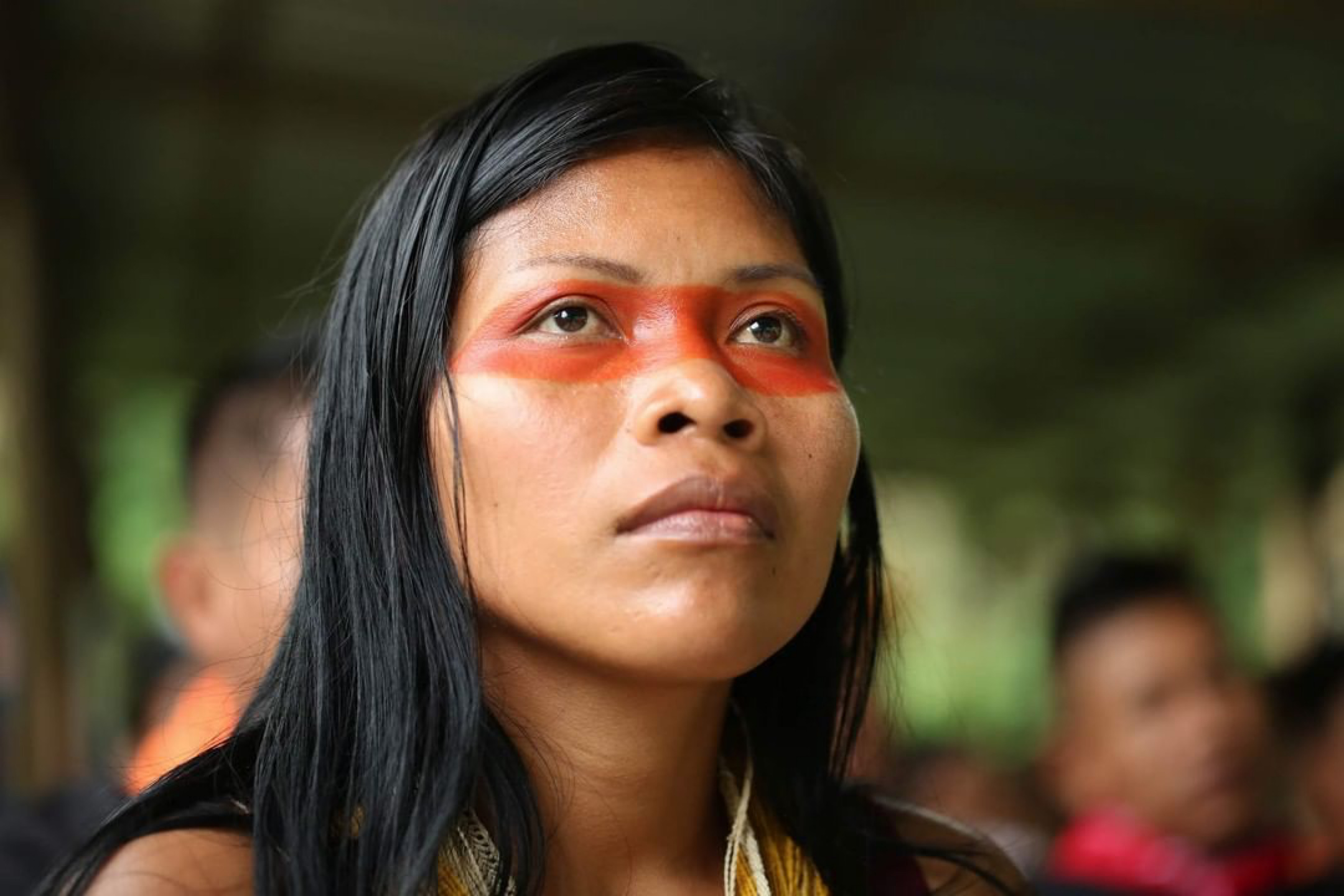
Nemonte Nenquimo, Indigenous activist and member of the Waorani nation from the Amazonian Region of Ecuador. Image credit: Courtesy of Amazon Frontlines
3. Women are and have been strong environmental organizers
Foremothers of Protecting Nature
In many ways, women started the environmental movement as we know it today. Rachel Carson's seminal book, Silent Spring, inspired a generation of grassroots action for the Earth, ultimately leading to the founding of Earth Day and the creation of the US Environmental Protection Agency.
Through 60 years of groundbreaking work in the field, Jane Goodall introduced the world to the complex family interactions of wild chimpanzees. She inspired a new public awareness about protecting primates and their vital habitats.
As a marine biologist, oceanographer, and explorer, Dr. Sylvia Earle was the first female chief scientist of the US National Oceanic and Atmospheric Administration and continues to inspire action to end overfishing and pollution in our oceans.
Combing environmental and social justice
Women also have taken the initiative as key leaders in interconnected social and environmental movements. When Ecuador's government was about to sell off seven million acres of Indigenous land in the Amazon to oil companies, Waorani Indigenous leader Nemonte Nenquimo led a community action lawsuit to stop the sale. The court ruled in favor of the Waorani people, protecting the land from oil extraction and requiring informed consent from the tribe before further auctioning.
Wangari Maathai created 6,000 tree nurseries to block desertification in Kenya and worked to empower women in her community. Her work led to the Great Green Wall Initiative. This African-led movement aims to grow an 8,000-kilometer belt of trees across the Sahel, transforming millions of lives while sequestering vast amounts of carbon.
LaDonna Brave Bull Allard sparked a worldwide movement to protest the construction of the Dakota Access Pipeline on her community's land. In July 2020, a federal judge sided with the Standing Rock Sioux Tribe and ordered a full environmental analysis, leading to the pipeline project being officially scrapped in 2021.
In Honduras, the world's largest dam developer, Auga Zarca, was set to build on the Río Gualcarque, a river sacred to the Lenca people. Building the dam would have disrupted their access to water, food, and medicine while damaging the environment. Berta Cáceres waged a grassroots campaign that successfully halted the project, proving it violated international treaties governing Indigenous peoples' rights.
These are just a handful of examples of influential women leaders in their particular field of conservation—hundreds more have joined their ranks. According to the Goldman Environmental Prize—what some call the "Nobel Prize" for the environment—approximately 60% of the over 200 prize winners are women.
.jpg)
New Zealand Prime Minister Jacinda Ardern. Image credit: Courtesy of Governor-General of New Zealand
4. Women in power improve society
Enhancing lives, cutting carbon emissions, and creating peace
Research indicates that empowering women significantly impacts communities and societies worldwide. Countries become greener in policy, local economies grow, children are healthier, and education levels improve—all of which are foundations for a more sustainable future.
In many countries, women lead get-out-the-vote efforts and vote more often. Women often lead on environmental and social legislation when elected to public office. For example, after winning reelection, New Zealand’s Prime Minister Jacinda Ardern and her 40% women cabinet declared a "Climate Emergency." They set in motion a plan to make the country’s public sector carbon neutral by 2025.
Studies show that where women have higher social and political status, their countries have 12% lower CO2 emissions. [11] They also create and improve climate change policy more often than men. A study of 130 countries showed that nations with a high representation of women in their administrations are more likely to ratify international environment treaties. [12]
Additionally, women are vital actors in peacemaking. When involved in negotiations, they increase the probability of ending violence by up to 24%. [13]
Collecting water and holding knowledge
In many countries, women and girls are responsible for collecting water, holding vital knowledge of local water systems and stewardship practices. Women and girls worldwide will spend 200 million hours collecting water daily. [14]
Repeatedly, the UN has recognized that the success of sustainable water resource management largely depends on engaging women at all levels of decision-making and implementation. The exclusion of women from water supply and sanitation planning has proven to be a significant factor in their high failure rate.
Fueling homes and making more sustainable choices
Fuel collection is also primarily led by women in the Global South, especially for lighting and cooking, where 90% of women take the lead in feeding and running their homes. When given the resources, women are more likely to choose sustainable fuel options that reduce emissions globally. [15]
Feeding the world and increasing yields
Women farmers feed the world. Managing 70% of smallholder farms in Africa, women provide more than half of all nutrition to people on the continent. [16] Their agricultural systems are rooted in tradition, passed from mother to daughter for centuries, and inherently adapted to specific variations in land and climate.
Before the advent of industrialized agriculture, women farmers used regenerative agricultural practices to return nutrients to the soil, building resilience and fertility over time without chemicals. According to the UN, women can increase agricultural yields by 20-30% when provided the same resources as men, reducing hunger by 12-17%. [17]
Instead of expanding industrialized agriculture—typically run by male-dominated companies and often heavily dependent upon expensive chemical imports—governments could support the millions of women farmers practicing regenerative agriculture today, helping to close the hunger gap in their countries.
.jpg)
Farmer planting in haze of smoke in Kalimantan, Indonesia. Image credit: Creative Commons, Aulia Erlangga, CIFOR
5. Women turn their innate knowledge into action
The power of Indigenous wisdom
Through their traditional roles as healers, culture shapers, and caretakers of water and land, Indigenous women and women in the Global South have vast knowledge and skills about Nature.
This wisdom can significantly contribute to building resilience, reducing greenhouse gas emissions, and promoting environmental preservation worldwide. Traditional knowledge offers natural solutions to energy, waste management, and agriculture.
Helping forests grow
It has been shown that significant improvements in forest conservation happen when women are involved in management and decision-making. A study in India found that with a high proportion of women in leadership, regeneration rates and canopy growth increased even when established in smaller and more degraded forests. [20]
Planting seeds and protecting biodiversity
Women are also the keepers of native seed banks and nurseries and lead replanting and conservation efforts that prevent forest degradation, increase carbon sequestration and protect biodiversity. Recently, the Global Landscapes Forum (GLF) celebrated 16 female leaders who have worked to preserve and restore natural capital.
For example, Sumarni Laman's tree planting program is helping restore biodiversity across Indonesia. In India, Vandana Shiva created one of the first community seed banks called Navdanya, meaning "nine seeds," to symbolize the protection of biological and cultural diversity.
With 150 community seed banks across 22 states, Navdanya is a freely sharing, saving, and breeding program for native crop species. Vandana founded the program on the belief that there is no separation between humans and nature, and many more seed banks like it have now been created in surrounding countries.
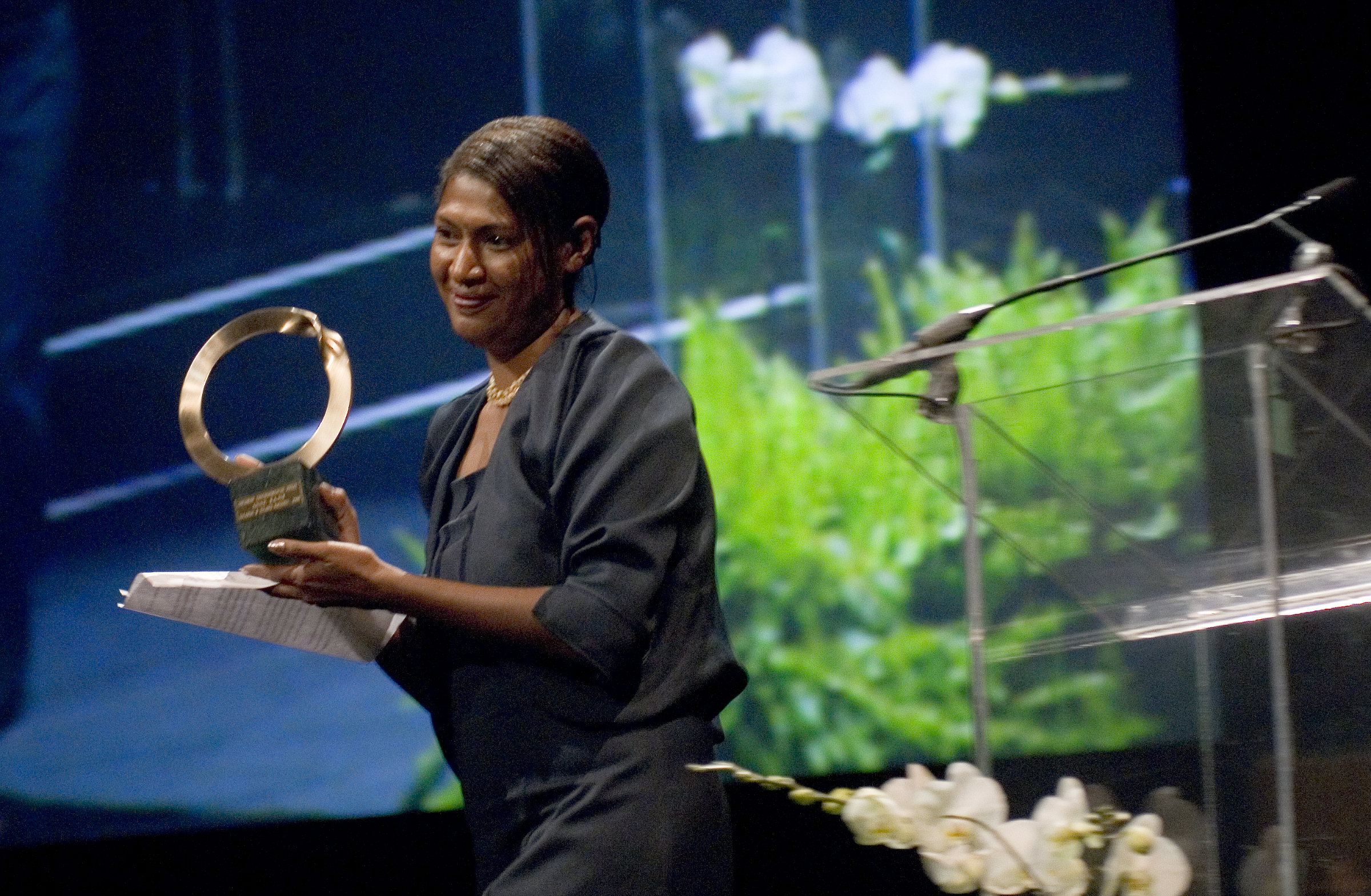
Papua New Guinea attorney Anne Kajir wins a lawsuit against a global timber company that must pay back Indigenous landowners. Image credit: Courtesy of Goldman Prize
6. Women excel in the economy
Whether senior managers, CEOs, or founders, women outperform
Ample research shows that increasing employment and leadership opportunities for women greatly benefit companies and the economy. Businesses with three or more women in senior management positions score higher on all dimensions of organizational performance. [21]
Women-founded companies in a major venture capitalist portfolio outperformed companies founded by men by 63%, delivering significantly higher revenue. Furthermore, in a study of over 350 startups, women's companies gained over twice as much per dollar invested. [22]
After appointing a woman CEO, data also shows that the stock outperformed those with male CEOs by an average of 20% after two years. [23]
Improving gender equity would rapidly increase GDP
The McKinsey Global Institute (MGI) report found that if all countries in a region match the rate of the fastest-improving country in gender equality, as much as $12 trillion, or 11%, in annual GDP could be added to the global economy by 2025. The scenario where women play an equivalent role in labor markets to men in all countries showed that as much as $28 trillion, or 26%, could be added to the global annual GDP by 2025. [24]
Making greener choices and having more purchasing power
In industrialized nations, women are more likely to recycle, buy organic food and eco-labeled products, and endorse energy efficiency measures. Yale University found that more women worry about climate change and support climate change mitigation policies than men. [25]
Women in North America also now start 70% of new businesses [26] and make over 80% of all consumer purchases. [27] This potential can be leveraged to transition more rapidly to a sustainable, clean energy economy.
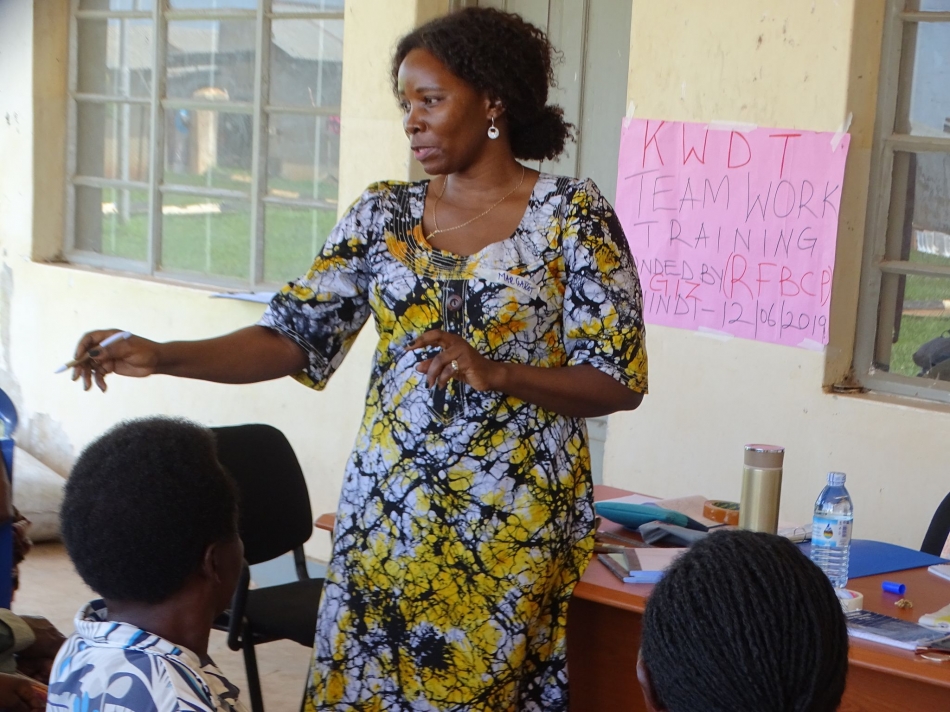
Food hero Margaret Nakato speaks passionately about boosting women’s role in food production. Image credit: ©Katosi Women Development Trust
7. Women and the world need equality
Lack of resources and land ownership
In much of the world, women are still considered the "second sex." Lack of resources, education, financial resources, and political representation keep women trapped in their current economic state.
Although agriculture is the most common source of work for women in most economies, less than 20% of landholders are women, and their property accumulation is much smaller than their male counterparts. [28]
Even in countries with some social reforms, culture often overpowers the law. Kenya amended their constitution to allow more women to own property, as women run more than three-quarters of the country's farms. But less than 2% of title deeds issued in Kenya have gone to women since 2013. [29]
Worldwide inequality in the workplace
Inequality in the workplace remains a pervasive issue worldwide, with staggering numbers highlighting the extent of the problem. Shockingly, more than 2.7 billion women worldwide are legally prohibited from accessing the same job opportunities as their male counterparts. This statistic serves as a stark reminder of the systemic barriers that persist. [30]
Incredibly, in 18 countries, women are still required to obtain their husband's permission to work outside the confines of their homes. This archaic practice restricts their autonomy and perpetuates gender inequality. [31] Furthermore, the labor force participation rate for women aged 25-54 stands at a mere 63%, significantly lower than the rate for men, which stands at 94%, indicating a substantial disparity in access to employment. [32]
Even when women overcome these obstacles and enter the workforce, they face another disheartening reality: the gender wage gap. With estimates placing it at 23%, women consistently earn less than their male counterparts for performing the same tasks, a deeply unfair and discriminatory practice that further perpetuates inequality. [33]
Women also are disproportionately responsible for unpaid care and domestic work, spending two to ten times more on these duties than men. [34]
These alarming facts demonstrate the urgent need for concerted efforts on a global scale to address and rectify the systemic barriers that hinder women's progress in the workplace, ultimately fostering a more equitable and inclusive society for all.
Family planning and rights to one’s own body
Inequality in health services affects women, too. More than 250 million women desire to have the ability to choose their family planning, but they are unable to access effective contraceptives. [35] This lack of access results in around 74 million unplanned pregnancies each year. [36]
Freedom to choose is a fundamental human right and reduces the pressure on natural resources. Investing more in women's health services is critical to giving women power and autonomy over their bodies and minds.
Education equity leads to healthier, richer, and more democratic societies
Insufficient education also impacts women, as half a billion women and girls aged 15 years and over are illiterate. Based on estimates from the UN, the good news is that the educational gender gap can be fully closed in 12 years on the current trajectory due to rapid advancements in some developing nations. [37]
Educated women are more likely to have better health outcomes for themselves and their families. They are more knowledgeable about healthcare practices, hygiene, and nutrition, leading to improved maternal and child health. Education also helps women make informed decisions regarding family planning and reproductive health, reducing infant and maternal mortality.
Increasing women's access to education also leads to economic development. Women who receive education are more likely to enter the workforce, earn higher incomes, and contribute to their families' and communities' financial well-being. According to a report by the World Bank, limiting educational opportunities for girls cost countries between $15 trillion and $30 trillion in lost lifetime productivity and earnings. [38]
When women are educated, it enables them to make informed decisions about their lives, exercise their rights, and participate more effectively in social, economic, and political spheres. Countries with higher levels of gender equality, including women's education, tend to have more democratic governance and better governance outcomes. [39]
Improving women's access to education is crucial for achieving sustainable development, promoting gender equality, and creating a better future for individuals, communities, and nations.
.jpg)
Former UNFCCC Executive Secretary, Christiana Figueres. Image credit: Creative Commons, UNFCCC
8. Women created the framework to limit global temperature rise
It must be noted that the Paris Climate Agreement would not be what it is today without women. A legendary group of climate leaders called the "lionesses," including Farhana Yamin, Christiana Figueres, and Tessa Tennant, met in the countryside of Scotland and came up with the guiding principle of 'net zero emissions' at a time when many parties to the climate convention were stuck in disagreements.
There are many more founding mothers of the goal as the pride of lionesses expanded into a group of more than 30 lawyers, diplomats, financiers, and activists with the mission to limit global temperature rise to 1.5°C. These precise targets and clear language allowed global leaders to finally understand the urgency and, with a clear objective, begin to cooperate to create actionable policy. [40]
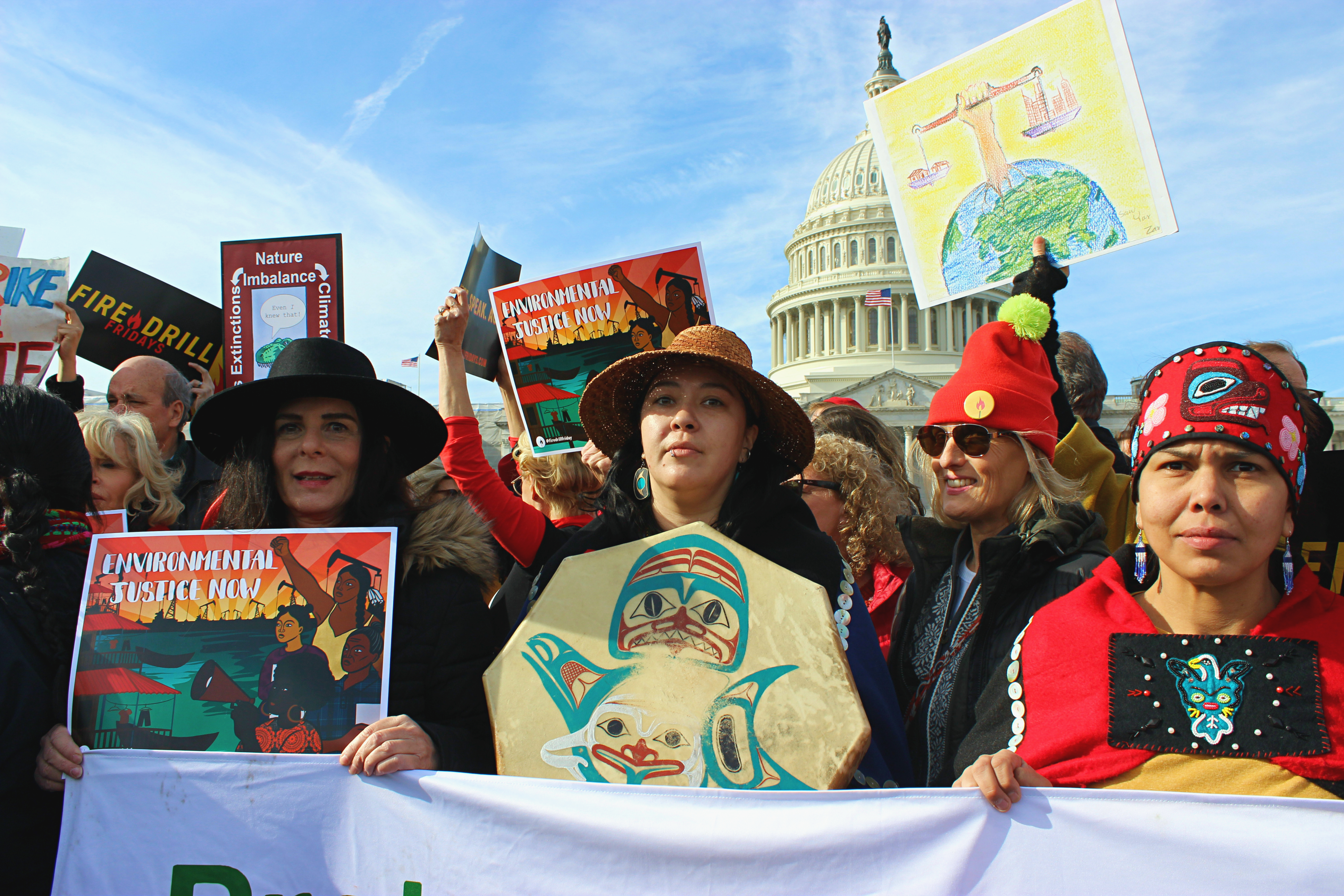
Image credit: Courtesy of WECAN International
9. Women are already solving the climate crisis
Networks are building while receiving less funding
The link between gender inequality and climate change is undeniable, but resources are still lacking. Currently, only 2% of all philanthropic dollars go to environmental causes [41], and this sector is second-to-last in equity rankings—with women's organizations receiving only 0.2% of donations [42].
Despite this lack of funding, women-led initiatives still lead worldwide grassroots action. One Earth recognized five women-led networks making a difference in the fight against the climate crisis—WECAN International, Women for Wildlife, Indigenous Women's Biodiversity Network, Women for Conservation, and Women in Nature Network. Their visionary and collaborative approaches to action are now organically scaling through peer-to-peer networks worldwide.
Now is the time to invest in women climate leaders
Women are disproportionately facing the effects of global temperature rise, and they are also disproportionately delivering solutions. It is time for policymakers, investors, and philanthropists to understand that women are immense forces for change and can lead their communities and society toward a more sustainable future.
All people of the world must unite to dramatically increase efforts to empower women by funding them accordingly and positioning them as the rightful leaders of the movement to solve the climate crisis.
Explore Women-led & Women-powered Projects-
-
[1] United Nations. (n.d.). Climate change exacerbates violence against women and girls. OHCHR. https://www.ohchr.org/en/stories/2022/07/climate-change-exacerbates-violence-against-women-and-girls
[2] Thurston, A. M., Stöckl, H., & Ranganathan, M. (2021). Natural hazards, disasters and violence against women and girls: a global mixed-methods systematic review. BMJ global health. https://doi.org/10.1136/bmjgh-2020-004377
[3] Neumaye E. & Plümpe T. (2007) The Gendered Nature of Natural Disasters: The Impact of Catastrophic Events on the Gender Gap in Life Expectancy. Annals of the Association of American Geographers. https://www.tandfonline.com/doi/full/10.1111/j.1467-8306.2007.00563.x
[4] Center for Economic and Policy Research. (2021, December 22). Welcoming Overdue Mercury Standards. OtherWords. https://otherwords.org/welcoming_overdue_mercury_standards/
[5] National Wildlife Federation. (2011). Mercury and Power Plants: Tipping the Scales Toward More Effective Controls. NWF. https://www.nwf.org/~/media/PDFs/Global-Warming/NWF-Mercury-Power-Plant-Factsheet_March2011.ashx
[6] Asian Disaster Preparedness Center. (2008). Case Study on Shelter Recovery in Indonesia after the 2004 Tsunami. ADPC. http://www.adpc.net/v2007/IKM/ONLINE%20DOCUMENTS/downloads/2008/3_CaseStudyShelterl.pdf
[7] Garikipati, S. & Kambhampati, U. (2020). Leading the Fight Against the Pandemic: Does Gender ‘Really’ Matter? http://dx.doi.org/10.2139/ssrn.3617953[8] Sergent, K., & Stajkovic, A. D. (2020). Women’s leadership is associated with fewer deaths during the COVID-19 crisis: Quantitative and qualitative analyses of United States governors. Journal of Applied Psychology, 105(8), 771-783. http://dx.doi.org/10.1037/apl0000577
[9] Harvard Business Review. (2020) Research: Women Are Better Leaders During a Crisis. HBR. https://hbr.org/2020/12/research-women-are-better-leaders-during-a-crisis
[10] Leisher, C., Temsah, G., Booker, F., et al. (2016) Does the gender composition of forest and fishery management groups affect resource governance and conservation outcomes? A systematic map. https://doi.org/10.1186/s13750-016-0057-8
[11] Kwauk, C. (2021). Why Captain Planet should have been a woman. Brookings. https://www.brookings.edu/blog/education-plus-development/2019/03/28/why-captain-planet-should-have-been-a-woman
[12] Norgaard, K., & York, R. (2005). Gender equality and state environmentalism. Gender & Society, 19(4), 506–522. https://doi.org/10.1177/0891243204273612
[13] Reed, B. (2014, August 11). Can women make the world more peaceful? The Guardian. https://www.theguardian.com/global-development-professionals-network/2014/aug/11/women-conflict-peace-society
[14] Water.org. (n.d.). Women and water - A woman’s crisis. Water.org. https://water.org/our-impact/water-crisis/womens-crisis/
[15] PlanetWomen.org (2021) Why Women? PlanetWomen.org. https://www.planetwomen.org/why-women
[16] Abass, J. (n.d.). Women grow 70% of Africa’s food. But have few rights over the land they tend. World Economic Forum. https://www.weforum.org/agenda/2018/03/women-farmers-food-production-land-right
[17] United Nations Climate Change. (n.d.). Five Reasons Why Climate Action Needs Women. UNFCCC. https://unfccc.int/news/5-reasons-why-climate-action-needs-women
[18] Food and Agriculture Organization of the United Nations. 2016, December 16). Women hold the key to building a world free from hunger and poverty. FAO. https://www.fao.org/news/story/en/item/460267/icode/
[20] Myae, A. C. (n.d.). Empowering women in forest governance contributes to forest conservation and poverty reduction. Landesa. https://www.landesa.org/who-we-are/blog/empowering-women-in-forest-governance-contributes-to-forest-conservation-and-poverty-reduction/
[21] UN Women. (2021). Facts and Figures: Economic Empowerment. https://www.unwomen.org/en/what-we-do/economic-empowerment/facts-and-figures#notes
[22] Kapin, A. (2019, January 28). 10 Stats That Build The Case For Investing In Women-Led Startups. Forbes. https://www.forbes.com/sites/allysonkapin/2019/01/28/10-stats-that-build-the-case-for-investing-in-women-led-startups/?sh=1c40e4be59d
[23] Taylor, C. (2019, October 18). Firms with a female CEO have a better stock price performance, new research says. CNBC. https://www.cnbc.com/2019/10/18/firms-with-a-female-ceo-have-a-better-stock-price-performance-sp.html
[24] Woetzel, J., Madgavkar, A., Ellingrud, K., Labaye, E., Devillard, S., Kutcher, E., Manyika, J., Dobbs, R., & Krishnan, M. (2015, September 1). How advancing women’s equality can add $12 trillion to global growth. McKinsey & Company. https://www.mckinsey.com/featured-insights/employment-and-growth/how-advancing-womens-equality-can-add-12-trillion-to-global-growth#
[25] Ballew, M., Marlon, J., Leiserowitz , A., & Maibach, E. (2018, December 12). Gender differences in public understanding of climate change. Yale Program on Climate Change Communication. https://climatecommunication.yale.edu/publications/gender-differences-in-public-understanding-of-climate-change/
[26] WECAN International. (n.d.) Why women? WECAN International. https://www.wecaninternational.org/why-women
[27] Betterton, R. (n.d.). The rising purchasing power of women: Facts and statistics. Bankrate. https://www.bankrate.com/loans/personal-loans/purchasing-power-of-women-statistics/#purchasing
[28] UN Women. (n.d.) Facts & Figures. UN Women. https://www.unwomen.org/en/news/in-focus/commission-on-the-status-of-women-2012/facts-and-figures
[29] Mwanza, K. (2018, March 13). Less than two percent of land in Kenya issued to women despite legal gains. Reuters. https://www.reuters.com/article/us-kenya-landrights-women/less-than-two-percent-of-land-in-kenya-issued-to-women-despite-legal-gains-idUSKCN1GP22B
[30] Picheta, R., & Mirchandani, K. (2019, March 2). Only six countries have equal rights for men and women, World Bank finds. CNN. https://www.cnn.com/2019/03/02/europe/world-bank-gender-equality-report-intl/index.html
[31] Council on Foreign Relations. (n.d.). Women’s workplace equality index: Leveling the playing field. Council on Foreign Relations. https://www.cfr.org/legal-barriers/
[32] Branna, T. (n.d.). It’s International Women’s Day. HAPPI. https://www.happi.com/contents/view_breaking-news/2021-03-08/it-s-international-women-s-day-246022/
[33] UN Women. (n.d.). Equal pay for work of equal value. UN Women. https://www.unwomen.org/en/news/in-focus/csw61/equal-pay
[34] Ferrant, G., Luca Maria Pesando, L. M., & Nowacka, K. (2014, December). Unpaid care work: The missing link in the analysis of gender. OECD Development Centre. https://www.oecd.org/dev/development-gender/Unpaid_care_work.pdf
[35] Davies, L. (2022, March 30). Fertility myths put millions off contraception, UN Report warns. The Guardian. https://www.theguardian.com/global-development/2022/mar/30/contraception-myths-mean-nearly-half-of-pregnancies-worldwide-unintended-report
[36] World Health Organization. (2019, 25 October) High rates of unintended pregnancies linked to gaps in family planning services: New WHO study. Council on Foreign Relations. https://www.who.int/news/item/25-10-2019-high-rates-of-unintended-pregnancies-linked-to-gaps-in-family-planning-services-new-who-study
[37] Nations Report. (2020). Women and Girls – Closing the Gender Gap. UN. https://www.un.org/en/un75/women_girls_closing_gender_gap
[38] World Bank Group. (2018, July 11). Not educating girls costs countries trillions of dollars, says New World Bank Report. World Bank. https://www.worldbank.org/en/news/press-release/2018/07/11/not-educating-girls-costs-countries-trillions-of-dollars-says-new-world-bank-report
[39] Levine, R., Lloyd, C. B., Greene, M., & Grown, C. (2008, January 14). Girls count: A global investment & action agenda. Center For Global Development | Ideas to Action. https://www.cgdev.org/publication/girls-count-global-investment-action-agenda
[40] Darby, M. (2020, November 6). Net zero: the story of the target that will shape our future. Climate Home News. https://www.climatechangenews.com/2019/09/16/net-zero-story-target-will-shape-future
[41] Thomas, M. (2021, December 19). Environmental nonprofits receive just 2% of charitable dollars. We need to change that. Fast Company. https://www.fastcompany.com/90707445/environmental-nonprofits-receive-just-2-of-charitable-dollars-we-need-to-change-that
[42] Dobson, C. & Lawrence, S. (2014) Our Voices, Our Environment the state of funding for women’s environmental action. Green Grants. https://www.greengrants.org/wp-content/uploads/2018/03/GGF_Mapping-Report_Executive-Summary_HighRes-FINAL.pdf
-
